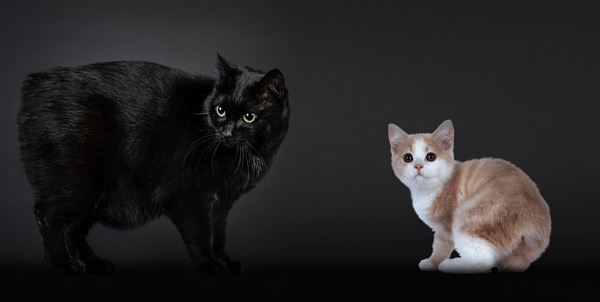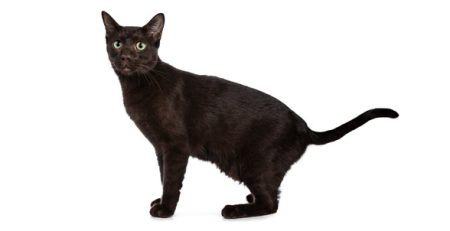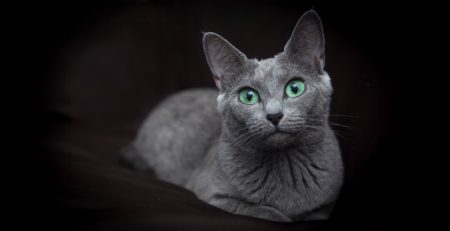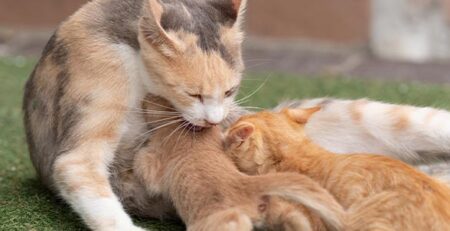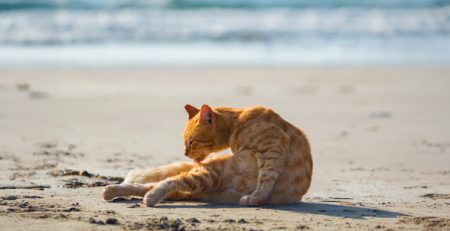The Manx, Isle of Man cat, and the mysterious disappearance of its tail
The Manx, among feline breeds, is a cat distinguished by its main characteristic: the absence of a tail.
Its origins are shrouded in legend and tradition, with countless tales trying to explain its birth and spread.
This breed is thought to have taken its name from the Isle of Man, located in the Irish Sea.
Manx cats are documented as early as the 19th century but their roots may predate this period.
According to one legend, these tailless cats swam to the Isle of Man from the destroyed galleons of the Spanish Armada in 1588.
Myths and legends about the Manx cat
Legends around the Manx are not only limited to its origin, but also extend to the origin of its particular physical conformation.
One of the most popular stories tells how a cat was struck by lightning, causing it to lose its tail.
Another legend has it that Manx cats were created by the magic of a witch, who longed for a mute, tailless companion.
And again, it is said that Noah, in his haste to set sail to escape the Flood, closed the Ark’s door just as the Manx was passing through it, and the poor cat lost its tail.
Although the legends are fascinating, it is crucial to remember that these stories have no scientific basis.
The absence of the tail, in fact, is the consequence of a specific genetic mutation known as the “Manx genotype.”
What the Manx genotype consists of
A mutation in the M gene, the gene responsible for determining tail length, is found in Manx.
This mutation alters the formation of the caudal vertebrae and in some cases, also the sacral vertebrae, resulting in partial or total shortening of the tail.
Manx can present:
- a total absence of tail (rumpy)
- A bony protuberance at the base of the spine (rumpy iser)
- a short tail (stumpy)
- a normal although shorter tail than that of other cats (longy)
Manx syndrome
A Manx may develop scoliosis or vertebral abnormalities, as the lack of a tail is often related to deformities in the spine and can also result in possible abnormalities in the animal’s neurological and motor development.
The pelvic structure is often shorter in these cats, causing the typical altered gait (hare-like gait) and joint stiffness.
These issues are known as Manx syndrome.
But not only that, a cat’s tail performs crucial functions for its balance and communication.
What a cat’s tail is for
In nature, the tail helps cats maintain stability during jumps and runs, facilitating their movements but also serves as a communicative element.
Therefore, the lack of tails in Manx cats could significantly affect their nonverbal communication and their ability to maintain balance.
In addition to the lack of a tail, another important characteristic of the Manx is its “roundness.”
The Manx: compact and muscular
Round are the eyes, head, feet and body; the ears, too, are rounded at the tip.
Compact and muscular, this cat has another peculiarity, which is the significantly longer hind legs than the front ones.
This allows him to take out decidedly prodigious jumps and have formidable acceleration.
The character of the Manx cat
The Man is known for his affectionate and playful nature.
These cats tend to be very sociable and form strong bonds with their humans.
They are intelligent and curious animals, fond of play and exploration.
As robust and long-lived as they are, Manx should be screened regularly to prevent and limit the risks of developing diseases related to the genetic mutation
To have your Manx checked and for periodic check-ups, contact the veterinary doctors on our staff who are always available to you.
We would also like to remind you that Clinica La Veterinaria is always open h24 every day including holidays and with First Aid service from 8 pm to 8 am.

